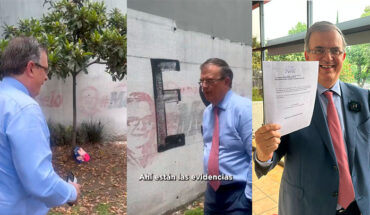When Catalina Rojas is asked how she met her late husband, Roberto Parra, she doesn’t help but let out a sigh with humor. “I don’t even remember anymore,” he says with a laugh. “I met him in the ‘Balnearios Populares’ in the Allende government. Roberto was singing in all the spas: in Peñuelas, in Pichidangui, in Los Vilos, everywhere,” he recalls. Next Tuesday, June 29, marks the centenary of the birth of chilean musician, singer-songwriter and folklorist Roberto Parra. That is why Editorial Pehuén presented three unmissable titles: “La negra Ester / El desquite”, a text with the tenths of its authorship; “Roberto Parra. La vida que yo ha pasado”, by Catalina Rojas; and “La Música de La Negra Ester”, by Cuti Aste, Álvaro Henríquez and Jorge Lobos.Si is well signed by Rojas, the popular singer says that “Roberto Parra. The life I’ve been through” is more of a family project. “My daughter also wrote in it and there are photos of Roberto, his works, there are even scores,” she says. The book is a complete biography that gives an account of the different stages of the career of this singular artist born on June 29, 1921.In this text, the singer-songwriter and mother of his two children, together with Pehuén, show the man who changed the vision and content not only of the cuecas, but of Chilean popular culture, who played his art in stages such as boites, circuses and cabarets throughout the country. The musician, who at the time had no recognition, has become one of the icons of urban folklore, and is that in addition to his songs his name opened the way for its tenths, including those present in his book “Décimas de la Negra Ester”, which would end up being taken to the tables by Andrés Pérez, becoming the most viewed work in the history of Chilean theater. At the beginning of the month, the Chamber of Deputies approved the bill that establishes June 29 of each year as the Day of Urban Folklore Roberto Parra. Rojas believes that this is a good thing. “At least it’s being given the importance it has,” he says. The bill awaits the Senate’s decision.Doesn’t it bother you that there’s a lack of knowledge of your music? Look, at this point in life I don’t care anymore. He thinks everyone knows me as “roberto parra’s widow”. I have assumed that for a long time, although there is a song that they sing eternally in Valparaiso. It’s called “Puerto Esperanza,” so at least in Valparaiso I get touched every day.What did you like about Roberto?It turns out he looked a lot like my dad, because he was also a musician. But in the end he never practiced because he had a lot of children, but that was the main thing, they looked a lot alike. These are conclusions that I have drawn some time later. With him there were never any sorrows.Now we are working on this series by Roberto Parra. Have you been contacted about this project?Yes, but filming isn’t started yet. They won a fund last year, and the other day I was collaborating with the script and there’s a lot of sticking point, there’s a lot of work.How do you see this increase in interest in his legacy?Super good. In San Antonio they have activities all year round and in September there will be a cueca chora festival where young people from the region will participate. The same 29 is going to present a book called “The Coup”. It is a book that has already come out but it is a play adapted by the playwright Florencia Martínez that was written by Roberto. There I will participate through the National Library at 19:00 hours. There are several notebooks there and this week they will launch some audiovisual capsules through the Library. They’re going to start releasing them on Youtube and Facebook this week. We are doing a lot of work.Do you think there is a lack of recognition of Chilean folklore?I think there is a return, especially in the cueca. The urban cueca actually. There’s a renaissance everywhere, in Valparaiso, here in Santiago anyway, although with the pandemic everything is closed. But there’s a rebirth of the cueca, and we’re happy with that. I think it’s partly because of Álvaro Henríquez, who in all his performances plays Roberto’s songs.Of course, The Three helped a lot to make their music more popular…Since Alvarito’s performance on MTV about 10 years ago many young people have noticed his music, playing cuecas. The truth is that I am full of emotion when I remember that Los Tres sang “Quién es la que viene ahí” in Viña del Mar and everyone sang it, it is super beautiful.
translated from Spanish: Catalina Rojas, widow of Roberto Parra: “I am filled with emotion when I remember Los Tres singing ‘Quién es la que viene ahí’ in Viña”
June 22, 2021 |





